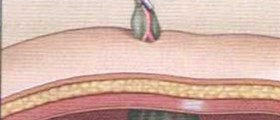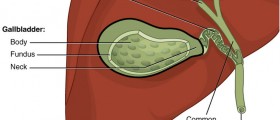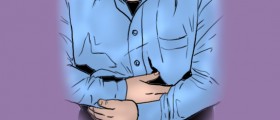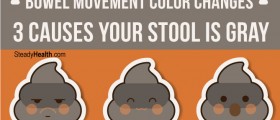
Gallbladder
Gallbladder is an organ in the human body that is a part of the digestive system. It is located near the liver and it is the storage for bile, which is very important for the dissolution of the fats that enter the digestive system. If the gallbladder does not function properly, it is called bad gallbladder.
The symptoms of bad gallbladder noticed right away in the beginning should be treated promptly in order to avoid further worsening of the condition and many other complications. The bad gallbladder has symptoms that are also the symptoms of many other digestive problems. Therefore, it is important to notice several symptoms that occur simultaneously in order to suspect on bad gallbladder. The symptoms of bad gallbladder are not as severe as the symptoms of gallbladder attack.
Symptoms of bad gallbladder
The most frequent signs of this condition are chronic constipation, light colored stools, pain between the shoulder blades and abdominal pain. Furthermore, the person who suffers from bad gallbladder may experience nausea, vomiting and flatulence, although a bitter tasting bile vomiting after eating and sensation of heaviness after eating greasy foods are also some of the symptoms of this problem.
Symptoms of a gallbladder attack
A gallbladder attack typically lasts from one hour to even fifteen hours and the symptoms are similar to the symptoms of a bad gallbladder, although they are more severe. In the majority of cases, the gallbladder attack occurs at night, which is caused by heavy meal rich in fats. The frequent symptoms of the gallbladder attack are harsh pain that occurs underneath the ribcage on the right side, pain between the shoulder blades and acute abdominal pain accompanied by the tenderness in the stomach. Other symptoms of a gallbladder attack include nausea, vomiting, fever and chills, as well as repeated belching, gas, and difficulty while breathing.
Symptoms of gallstones
The bad gallbladder may be caused by the formation of gallstones in it. Gallstones are hardened digestive fluids that stay in the gallbladder, they are different is size and it is not unusual if they do not cause any pain ever. However, gallstones may lead to the occurrence of duct blockages. The most common symptoms of gallstones are sudden strong pain between the shoulder blades, severe and unbearable pain in abdomen and sudden and sharp pain beneath the right side of the ribcage. Yellow skin under the eyes and violent shivering are also some of the signs of gallstones.
















Your thoughts on this
Loading...